“Old places have a soul waiting to tell it’s story”
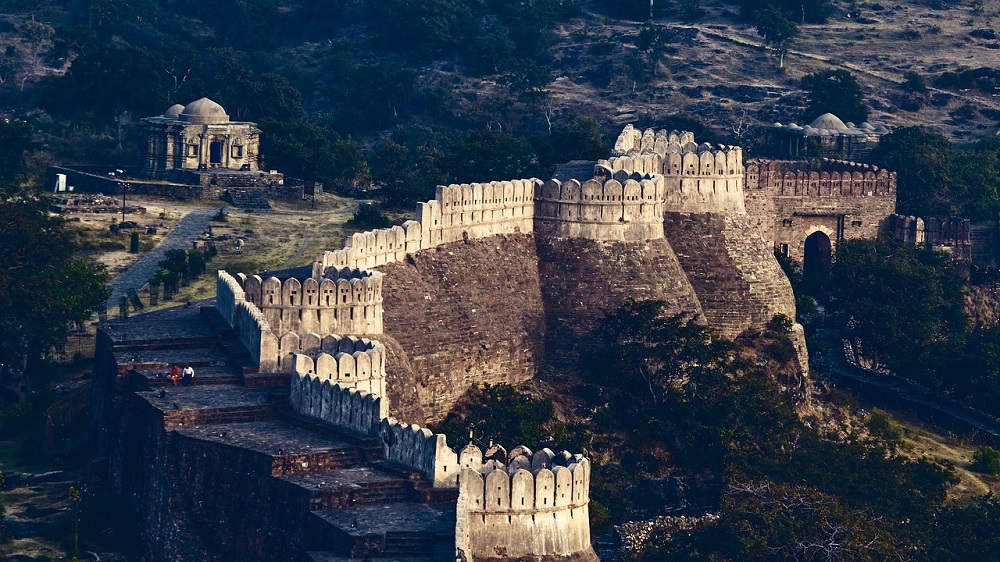
Second Largest Wall in the World, An Unbreakable boundary, The Great Wall of India, The fortress of Mewar – these are a few of the names given to this marvelous fort of Kumbhalgarh situated in the Aravali Hills, Rajasthan.
India, the Golden Bird, is said to be many things – one of which is the “Land of Mystery and Ancient Culture“. With a diverse range of infinite unique cultures, distinctive languages and wonderful people spread at all corners of the nation, the history of the country goes back thousands of years.
We at TravelSole will cover all the grand ancient architectures spread across India in the #AncientIndia blog post series. Let’s spread out our culture, our stories and our ancient history with the world around us!
History of the Kumbhalgarh Fort in India
Looking back at the history of this place where the fort now stands, earlier accounts say that it was previously called as Machhindrapur. The original fort is believed to be build under the rule of King Samprati of the Maurya Dynasty who ruled somewhat until 1303 AD. That was the time when Alauddin Khilji came to conquer it.

The Kumbhalgarh Fort which we know and love today was built later on under King Maha Rana Kumbha, ruler of the dynasty of the Hindu Sisodia Rajputs. The fort now known to be the second largest wall in the world, was built up by a famous architect of the 15th century – Madan.
Later as the kingdom grew larger from Ranthambore to Gwalior, King Rana Kumbha conquered 84 forts in total in the large area now falling under the beautiful states of Rajasthan and Madhya Pradesh. Out of those 84, it is said that the King himself built 32 of them. The Kumbhalgarh fort remained to be the largest and strongest amongst all the others.
One of the most interesting things about the fort was that it was believed by the locals that it cannot be conquered – as a deity worshipped as Ban Mata was the one who protected the walls of the fort from getting destroyed. Ban Mata temple can be found in Chittorgarh where people worship the Guardian Goddess of Mewar.
Many instances happened where different rulers tried and failed to conquer the Great Wall of India, Kumbhalgarh Fort. In 1457, a ruler from Gujarat Ahmed Shah I came to attempt an attack on the fort but failed to break down the 36 kilometers widely spread Second largest wall in the world. Learning about Ban Mata, the protector and guardian Goddess of Mewar protecting the walls, Shah destroyed the temple situated inside the great fortress.
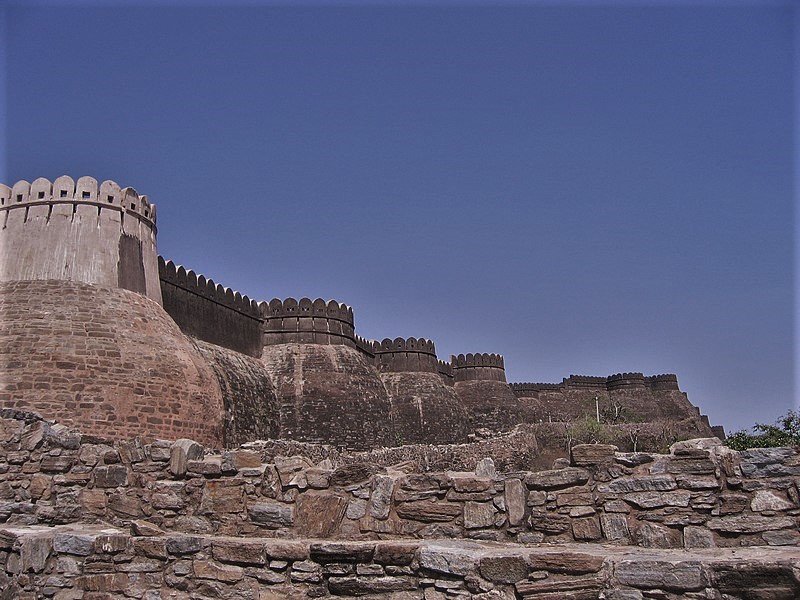
In 1535, during the time when Chittor was under siege, the infant King of Mewar was smuggled into the fortress. Prince Udai grew up inside the chambers of the fort and later succeeded the throne.
Next, in 1576, Akbar’s general Shahbaz Khan had taken control of the area and the Kumbhalgarh fort on the orders of Man Singh I, post the Mughal victory in the Battle of Haldighati (a fierce battle between Hindu Rajputs led by Maharana Pratap and Mughals led by Man Singh I).
After ruling for a decade, the fearless Hindu Rajput Maharana Pratap came back to fight and conquer the great wall fortress of India from the Mughals in 1585.
Maharana Pratap was actually born inside the very fort he had conquered years later.
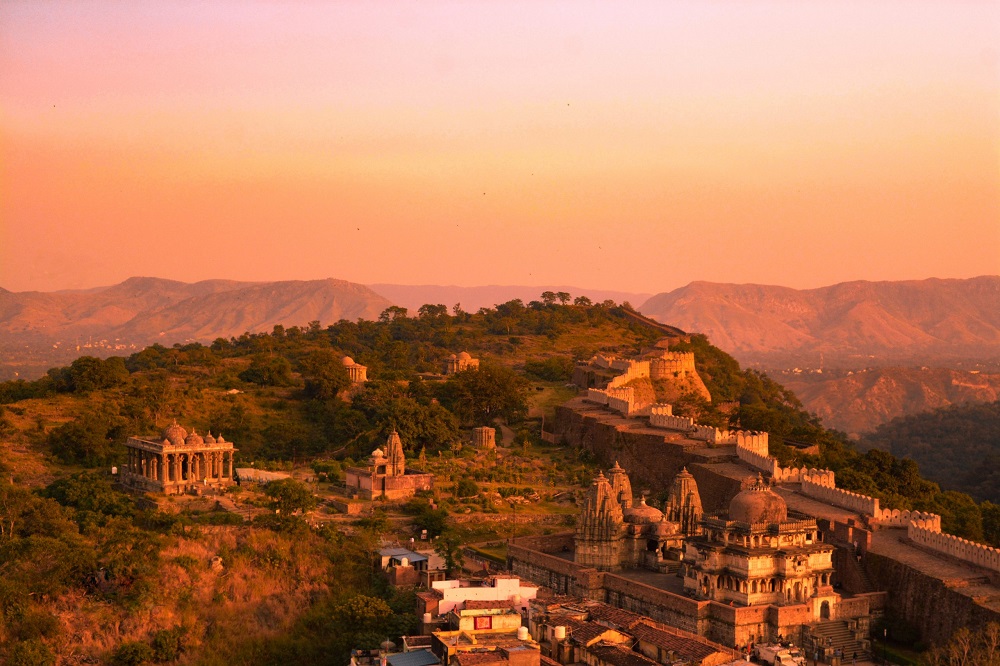
The great fort of India in Kumbhalgarh remained to flourish under the rule of Maharana Pratap for years to come.
Quite a lot of time passed and later during the British era, Lieutenant-Colonel James Tod took over the fort under the British rule and it was later returned back to the wonderful city of lakes, Udaipur (white city of India).
What makes “the Great Wall of India” so special?
So, other than the fact that it actually is number two on the list of largest walls in the whole wide world, Kumbhalgarh Fort is very famous amongst tourists and locals as well for many reasons. Here are a few –
- Birthplace of Maharana Pratap, the Great Indian Warrior
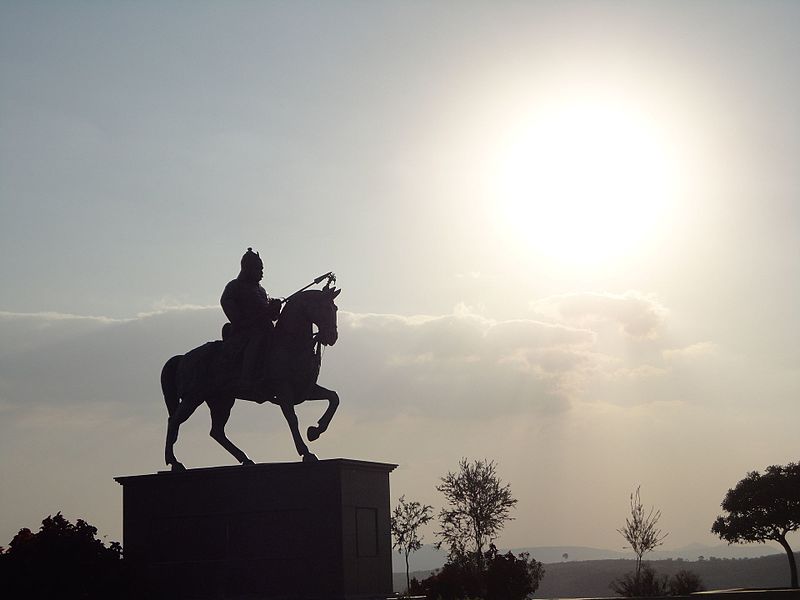
As mentioned earlier, Maharana Pratap was born in 1540 inside the Kumbhalgarh fort to Udai Singh II and Jaiwanta Bai. He got honored with the title of “Mewari Rana” and is still known for his fight against the Mughal Empire in the battles of Haldighati and Dewair.
Maharana Pratap is a conspicuous figure in both folk and modern day Rajasthani culture and is seen as a commended warrior in that state, just as in India in general.
- It is a World Heritage Site listed under Hill Forts of Rajasthan.
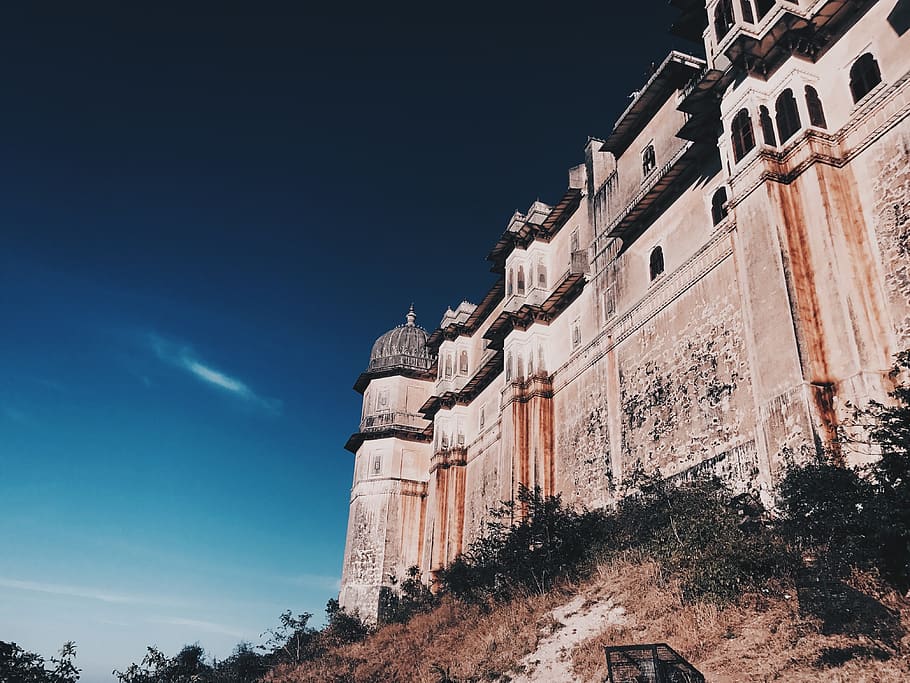
Located strategically over the Western Aravalli Hills in Rajasthan, the Kumbhalgarh Fort has made its way into the list of unique World Heritage Sites under the group Hill Forts of Rajasthan.
Bein a UNESCO World Heritage Site itself says in tons about how great the place is and what it represents.
Read about another World Heritage Site from TravelSole – Elephanta Caves in Mumbai
- The Kumbhalgarh Fort provides an adventurous hike to reach the main fort

Apart from being a place of warrior vibes and a kingdom ruled by several kings during their time, the second largest wall in the world also offers something which the young travelers seeking adventure get attracted here for – TREKKING!
Yes, the Kumbhalgarh Fort is situated at a height of 3600 feet above sea level and the fort itself is magnanimous standing at a height of 1100 feet itself.
The trek is of beginner level for the most part but adventurous none the less! The best part about the fort is that you need to climb about 3 to 4 kilometers of it to actually see the fort existing in all its glory!
- It houses 364 temples inside the entire premises

The Kumbhalgarh fort houses in total 364 temples out of which 300 are dedicated to Jain beliefs. These religious temples incorporate Ganesh Temple, Vedi Temple, Neelkandh Mahadev, Parsvanath Temple, Bhawan Devi, Golerao Group of Temples, Mamadio, Pitalia Dev, etc.
- The Great Sacrifice – Interesting tale of Baid Baba
So, the fort of Kumbhalgarh has total 7 main gates or Pol out of which the major 4 are called Aaret Pol, Hulla Pol, Hanuman Pol and Ram Pol. (Pol means Gate in the local language here).
The tale is about the Hanuman Pol – the major gate used by tourists to enter the premises of the Kumbhalgarh Fort in India.

” According to local belief, during the construction of the largest fortress in Rajasthan and the second largest wall in the world, the then King Maharana Kumbha failed quite a few times in building the giant wall structure – now known as the Great Wall of India.
Then, a Saint called Baid Baba reached out to him and said that the construction won’t be able to get completed without a human sacrifice!!
When no one else volunteered for the Great Sacrifice to get the fortress fully constructed and protected for the next centuries to come, Baid Baba himself stood up for the challenge!
He told the King to follow him as he climbs the hill –
“When I stop at the first point, mark it as the place for the construction of the main entrance gate of the fortress.
When I stop at the second point, that is where you shall behead me! – that is where a temple will be built.
Thirdly, after I am beheaded my body would still climb up the hill until it finally gives up – that would be the point of the fort’s limit”
The King had his people do the exact same thing. If you visit the place, you will see a temple constructed near the entrance at the Hanuman Pol of the Kumbhalgarh Fort.
How to reach the Kumbhalgarh Fort in India?
Kumbhalgarh is situated at a distance of approximately 85 kilometers from the beautiful city of Udaipur in Rajasthan. It does not have it’s own airport but is easily accessible via road from Udaipur as well as other major cities in Rajasthan like Ajmer, Jaipur, etc.

By Air
Udaipur, around 85 km away, is the closest air terminal. Prepaid cabs charge about Rs. 1600 from Udaipur to Kumbhalgarh. Udaipur is very much associated via air to Delhi, Jaipur and Jodhpur. Prepaid taxicabs are accessible to take you to close towns.
By Train
Closest railhead is Falna, around 80 km away, which is an intersection railroad station. It is very much associated with Mumbai, Ajmer, Delhi, Ahmedabad, Jaipur and Jodhpur. Taxicabs can be employed from the station to Kumbhalgarh.
By Bus
Rajasthan State Government Roadways gives customary just as exclusive transports which stop at Kumbhalgarh on the way to different urban communities. The town is associated with Udaipur, Ajmer, Jodhpur and Pushkar by state transports which employ much of the time.
Best places to stay – Resorts in Kumbhalgarh
1. Mahua Bagh Kumbhalgarh
Distance from Kumbhalgarh Fort : 4.3 km (10 mins distance)
Star Rating : 3 Stars ***
Cost per night per room : Rs. 8,331/- (as per MMT)
2. Kumbhalgarh Safari Camp
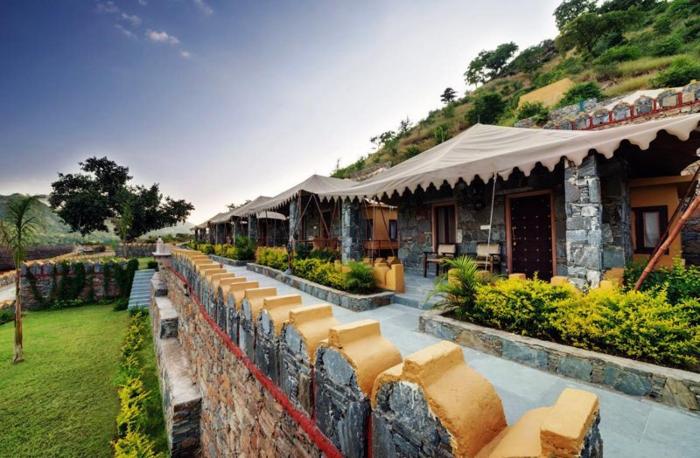
Distance from Kumbhalgarh Fort : 5.5 km (14 mins distance)
Star Rating : 3 Stars ***
Cost per night per room : Rs. 6,572/- (as per EaseMyTrip)
3. Kanj – The Haveli Resort | Heritage Resort in Kumbhalgarh

Distance from Kumbhalgarh Fort : 1.9 km (5 mins distance)
Star Rating : 3 Stars ***
Cost per night per room : Rs. 3,409/- (as per goibibo)
Best places to visit in Kumbhalgarh
Keeping aside the major landmark of the place i.e. the huge fortress containing the second largest wall in the world, Kumbhalgarh offers many other interesting sights to see and visit. Listed down below are some of the most popular ones :-
- Kumbhalgarh Wildlife Sanctuary
Known around the nation to be one of the most spectacular wildlife regions having unique species of wild animals along with a few endangered ones too, the Kumbhalgarh Wildlife Sanctuary is a must-visit if you happen to plan out a vacay and head towards this place.

It surrounds the Kumbhalgarh Fortress from mostly all sides and is spread over an area of approximately 610 square kilometers situated at a height of 500 to 1300 m. With the Leopard being the topmost predator in the area, you may find them if you happen to be on safari at the right moment. Other animals who are prey to the Leopard and can be found pretty easily are Nilgai, Sambar Deer, Antelope, Chinkara and Indian Hare.
As per a Wildlife census done in 2020, as estimated 136 leopards are found in and around the Kumbhalgarh Wildlife Sanctuary protected by the second largest wall in the world.
2. Badal Mahal – the Palace of Clouds
Badal Mahal is additionally a piece of the fundamental fortification of Kumbhalgarh. It is partitioned in two segments: Zanana and Mardana Halls for women and men separately. The design of both these segments is bewildering. Likewise, the perspective on the encompassing region from the highest point of the pinnacle is hypnotizing – to say the least!

The royal residence has some flawless wall paintings from the nineteenth century style and the Zanana Mahal is embellished with grid work or stone jalis from where the royal queens used to watch the procedures of the court and other significant occasions.
3. Neelkanth Mahadev Temple
Among the aforementioned 364 temples, the Neelkanth Mahadev Temple is one which is maintained by the locals and worshippers till date. Dedicated to Lord Shiva, the temple sits inside the Kumbhalgarh fort vicinity and many people come here to worship their deity to grant them a healthy life and fulfill their wishes.

It is very famous for the astonishing 6-ft high monolith shiv ling sitting inside. A fascinating element about the Shiva temple is that it has doorways from every one of the four bearings and houses a sanctum and an open-pillared mandapa. A column on the left of the sanctuary bears engravings that tell about the remodels done by Maharana Sanga.
4. Parshuram Temple – the Nine Kunds that never run dry
Parshuram Temple is a cavern temple that is revered by Lord Shiva. It is believed that the Hindu sage Parshuram remained and meditated here at this spot.

A path of around 500 steps lead down to the sanctuary that is pretty much like a trek. Plus, the sanctuary offers captivating landscape scenes on the encompassing Aravalli Hills thus, it is additionally the most loved spot for nature lovers and vacationers.
Finally, the one question you might get when you read about this Ancient wonderland in India, is that is it even worth your visit? Well the answer is YES! Yes it is.
It is a place of birth of one of India’s first ever brave Rajput warrior, it is a place full of ancient stories and temples and wonderful landscapes and it is indeed the Great Wall of India!

Kumbhalgarh Fort has something to offer to travelers of all generations and interests – like the wiser history lovers could come here to learn more about the place and the story it holds within and the more younger ones could come here for the amazing photographic opportunities, a unique wildlife experience and short adventurous treks.
As I said in the beginning, “Ancient or Old places are the ones who have a soul.” When you come here and explore around, they tell you stories of the untold, the unseen and the unheard! All you gotta do is really listen!
That’s All Folks!
Tell me in the comments your favorite ancient places in India or around the world!



[…] Read More – Kumbhalgarh Fort in Rajasthan […]
Awesome blog amazing content writing skill u have .want more blogs from your side.
Thanks for the support! New blogs coming soon
Wow..I like very much your way of writing.i like the truth and stories.😊😊
Thanks ☺️ keep supporting 😍
Nice blog I appreciate your ideas the way you present the blog and best thing is that you mention each and everything about the destination keep it up 👍
Hey!! Glad you liked it! Stay tuned for many more blog posts coming very soon! ❤️
Good blog. Thanks for sharing. Keep share more.
Thanks for the comment. Glad you liked it.
Your post was wonderful. I was really impressed. thanks for sharing.
Thanks a lot